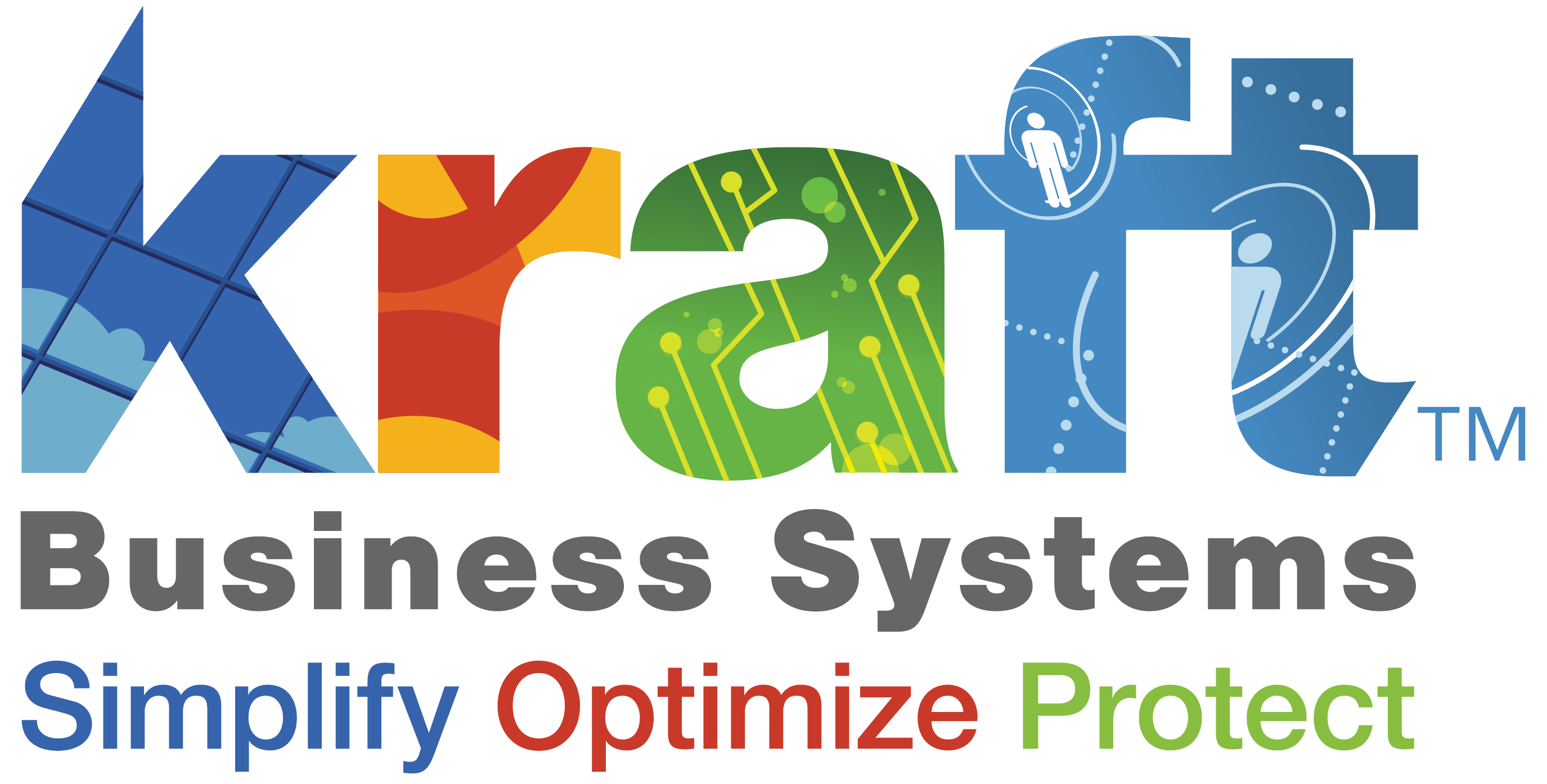IT services for small companies have become the difference between businesses that thrive and those that barely survive. Gone are the days when you could rely on your “tech-savvy” employee to handle everything from email problems to cybersecurity threats.
Here’s what IT services for small companies typically include:
• Cybersecurity protection – Firewalls, endpoint security, and employee training
• Data backup and disaster recovery – Automated backups with tested recovery plans
• Help desk support – Technical assistance when systems break down
• Cloud services management – Email, file storage, and collaboration tools
• Network monitoring – 24/7 system oversight to prevent problems
• Mobile device management – Securing and managing company phones/tablets
• Compliance support – Meeting industry regulations like HIPAA or PCI
The stakes have never been higher. Research shows that 80% of small businesses have suffered IT-related downtime, with costs ranging from $82,200 to $256,000 per incident. Meanwhile, cyber attack victims often spend over $50,000 and take six months or more to recover.
But it’s not all doom and gloom. The same research reveals that 87.5% of small and medium businesses either use managed IT services or are considering them. Why? Because professional IT support transforms technology from a constant headache into a competitive advantage.
Your employees need systems that work reliably. Your customers expect their data to stay secure. Your business requires technology that scales as you grow. That’s exactly what modern IT services deliver – and why trying to handle it all yourself is no longer a viable option.
Why IT Services Matter for Small Businesses
Picture this: you’re in the middle of closing your biggest deal of the year when your email server decides to take an unscheduled vacation. Or maybe ransomware has turned your customer database into digital hostage. These aren’t hypothetical nightmares – they’re everyday realities for businesses trying to manage technology on their own.
Operational uptime has become the heartbeat of every successful business. When your systems go down, everything stops. We’ve watched countless companies in Grand Rapids and across Michigan learn this lesson the hard way. Customers don’t care if your server crashed – they just know you can’t process their order or answer their questions.
Customer trust takes years to build but only minutes to destroy. When your technology fails, it doesn’t just affect your internal operations. Your customers feel it too. They experience slow response times, failed transactions, and service interruptions. Many will simply move on to a competitor who has their act together.
The demands on small businesses have never been more complex. Your remote workforce needs secure access to company files from their kitchen table. Compliance requirements keep expanding, whether you’re handling credit card payments or patient information. Growth opportunities slip through your fingers when your outdated systems can’t handle the increased workload.
Digital change isn’t just corporate jargon – it’s about survival. Companies that accept strategic technology planning position themselves to grab new opportunities. Those that treat IT as an afterthought find themselves constantly scrambling to catch up while their competitors pull ahead.
Defining IT Services for Small Companies
IT services for small companies go way beyond the old “fix it when it breaks” mentality. Professional IT support rests on three pillars: proactive monitoring that catches problems before they explode, strategic planning that aligns your technology with your business dreams, and comprehensive support that keeps everything humming along smoothly.
Think of it as having your own IT department without the headache of managing full-time employees. Professional IT teams watch your systems around the clock, like digital security guards looking for trouble. They spot warning signs that signal impending disasters, maintain detailed records of your network setup, and handle those tedious but critical software updates and security patches.
Strategic planning separates the pros from the pretenders. The best IT service providers don’t just keep your lights on – they help you build a technology roadmap that supports your growth goals without breaking the bank. This means taking a hard look at what you have now, finding the bottlenecks that slow you down, and recommending improvements that actually pay for themselves.
The True Cost of Going Without Professional Support
The “we’ll wing it” approach might look cheaper on paper, but it’s a financial time bomb waiting to explode. Lost revenue from a single major outage often exceeds what you’d pay for professional IT support for an entire year.
Recovery expenses have a nasty habit of multiplying when problems aren’t handled quickly. That “small” network hiccup can snowball into corrupted data, forcing you to shell out big money for data recovery specialists. We’ve seen businesses spend tens of thousands trying to fix problems that professional monitoring would have prevented for a fraction of the cost.
Reputation damage hurts even more than the immediate financial hit. Customers who can’t reach you or complete transactions don’t usually give you a second chance. They tell their friends about the bad experience, and social media makes sure everyone hears about it.
Don’t forget about employee frustration – it’s costing you money every single day. When your team spends hours wrestling with sluggish computers, email meltdowns, or software that won’t cooperate, productivity goes out the window. Studies show that two-thirds of workers say outdated technology significantly impacts their ability to get things done. That’s like paying your employees to fight with their tools instead of serving customers.
Essential IT Services for Small Companies
Your business runs on technology, whether you realize it or not. Every email sent, every customer record stored, and every online transaction processed depends on systems working reliably behind the scenes. When these systems fail, your business stops moving forward.
IT services for small companies have evolved far beyond fixing broken computers when they crash. They’re about building a technology foundation that actually helps your business grow instead of holding it back. Think of it as having a complete IT department without the overhead of hiring multiple full-time employees.
The core areas that matter most are network security to keep hackers out, help desk support so your team stays productive, cloud migration for flexible work arrangements, data backup to protect everything you’ve built, and disaster recovery to get back up quickly when things go wrong. Mobile device management rounds out the essentials, securing all those phones and tablets that connect to your business systems.
These aren’t nice-to-have extras that you can put off until next year. They’re as essential as having reliable electricity or internet service. The businesses that treat technology strategically tend to outperform those that see it as a necessary evil.
Essential IT Services for Small Business dives deeper into building a technology foundation that actually supports your goals.
Cybersecurity Solutions Custom to IT Services for Small Companies
Cybercriminals love small businesses. Not because they’re easier targets necessarily, but because they often assume smaller companies won’t have the same security measures as large corporations. Unfortunately, they’re often right.
Firewalls create the first line of defense, acting like a security guard that checks everyone trying to enter your network. But modern threats are sneaky – they slip in through email attachments, trick employees into clicking malicious links, or use stolen passwords to walk right through the front door.
That’s where endpoint protection becomes crucial. Every device that connects to your business – computers, phones, tablets, even smart printers – needs protection. Advanced endpoint security uses artificial intelligence to spot suspicious behavior and stop threats before they spread throughout your network.
The weakest link in any security system? Your employees. Phishing training helps your team recognize when someone’s trying to trick them into sharing passwords or clicking dangerous links. It’s amazing how much more secure a business becomes when everyone knows what to watch for.
Compliance audits ensure you’re meeting industry requirements, whether that’s PCI standards for processing credit cards, HIPAA regulations for healthcare data, or other regulatory frameworks. These aren’t just bureaucratic checkboxes – they’re proof that you take data protection seriously.
Small Business Data Protection explores specific strategies for keeping sensitive information safe.
Data Backup & Business Continuity in IT Services for Small Companies
Here’s a sobering statistic: 68% of small business owners don’t have a written disaster recovery plan. That means they’re crossing their fingers and hoping nothing bad happens to their data. Hope isn’t a strategy.
On-site and cloud copies of your critical data follow what IT professionals call the 3-2-1 rule: three copies of important data, stored on two different types of media, with one copy kept off-site. Modern cloud backup solutions handle this automatically, creating multiple copies without you having to think about it.
Recovery time objectives determine how quickly you need systems back online after something goes wrong. Some businesses can handle a few hours of downtime, while others need to be back up within minutes. Your backup strategy should match your tolerance for interruption and your budget.
Regular testing separates real protection from false confidence. We’ve seen too many businesses find their backup systems weren’t working only when they desperately needed to restore data. Monthly or quarterly restore tests ensure everything works when you need it most.
Cloud Computing & Remote Work Enablement
Remote work transformed from a nice perk to a business necessity almost overnight. SaaS suites like Microsoft 365 and Google Workspace give small businesses access to enterprise-grade tools without the complexity of managing servers in-house.
Virtual desktops let employees access company applications and data securely from anywhere. They can work from home, a coffee shop, or a client’s office using any device while maintaining the same security controls as if they were sitting at their office desk.
Zero-trust access assumes that no user or device should be automatically trusted, regardless of where they’re connecting from. This approach provides stronger security for remote workers while keeping access simple and user-friendly.
Collaboration tools make distributed teams more productive than ever. Video conferencing, shared file storage, and real-time document editing often enable better teamwork than traditional in-office arrangements.
Asset & Mobile Device Management Essentials
Technology assets multiply quickly as businesses grow. Inventory tracking systems document every device, software license, and warranty status. This information becomes invaluable for budgeting, security management, and compliance reporting.
Patch management ensures all devices receive security updates promptly. Cybercriminals often exploit known vulnerabilities in outdated software, making timely updates critical for protection. Automated systems reduce the administrative burden while improving security.
Remote wipe capabilities protect company data when devices are lost or stolen. Mobile device management solutions can instantly remove business information from compromised devices while preserving personal data on employee-owned devices.
Lifecycle refresh planning prevents the productivity drain of outdated equipment. Strategic replacement schedules ensure employees have reliable tools while managing technology budgets effectively.
Compliance & Regulatory Support
Regulatory requirements seem to multiply every year, creating compliance obligations that can overwhelm small business owners. Professional IT services help steer these requirements while keeping focus on core business activities.
PCI compliance affects any business that processes credit card payments. Requirements include secure network configurations, regular security testing, and comprehensive documentation. Non-compliance can result in significant fines and loss of payment processing privileges.
HIPAA regulations govern healthcare information privacy and security. Covered entities must implement administrative, physical, and technical safeguards to protect patient data, including access controls, audit logging, and risk assessments.
CMMC requirements affect government contractors and their supply chains. These standards mandate specific cybersecurity practices and regular assessments to maintain certification.
Documentation and audit readiness require ongoing attention to detail. Compliance isn’t a one-time achievement – it requires continuous monitoring, regular assessments, and detailed record-keeping to demonstrate ongoing adherence to regulatory requirements.
Managed, Break/Fix, or Co-Managed? Support Models Compared
Choosing the right IT support model can feel overwhelming, but it doesn’t have to be. Think of it like deciding between hiring a full-time employee, calling a contractor when things break, or getting help from both. Each approach has its place, and the best choice depends on your specific business needs and how much technology headache you’re willing to tolerate.
Managed IT services operate like having a dedicated IT department without the overhead. You pay a predictable monthly fee and get comprehensive support that includes proactive monitoring, regular maintenance, strategic planning, and unlimited help for covered services. Service level agreements (SLAs) spell out exactly how quickly problems get resolved and what’s included.
Break/fix support works more like calling a plumber when your pipes burst. You pay hourly rates for reactive problem-solving only when something goes wrong. While this might seem budget-friendly for businesses that rarely have IT issues, it often costs more in the long run and leaves you vulnerable to extended downtime.
Co-managed IT combines your internal staff with external expertise. This hybrid approach makes sense when you have existing IT personnel who need backup for specialized projects or round-the-clock monitoring capabilities.
Managed IT Services Benefits
Predictable costs make budgeting a breeze and eliminate those surprise IT bills that can wreck your monthly cash flow. Monthly fees typically cover all included services, so you can forecast technology expenses without worrying about unexpected repair costs derailing your budget.
24/7 monitoring means someone’s always watching your systems, even when you’re sleeping. Automated systems constantly check for potential problems and alert technicians before issues impact your business operations. This proactive approach prevents many problems from happening and minimizes the damage when something does go wrong.
Virtual Chief Information Officer (vCIO) services bring enterprise-level strategic planning to small businesses without the executive salary. Regular technology reviews ensure your IT infrastructure actually supports your business goals while identifying opportunities to save money or improve efficiency.
Scalability lets your technology grow with your business without requiring major overhauls every time you hire new employees or expand to new locations. Managed service providers can adjust support levels, add new services, or modify configurations as your needs change.
Managed IT Services for Small Businesses provides detailed information about implementing managed services effectively.
Break/Fix Drawbacks
Hourly billing creates those budget-busting surprises that no business owner wants to face. Emergency repairs always seem to happen at the worst possible times, resulting in premium charges for after-hours or weekend service calls that can cost several times the normal rate.
Reactive support focuses on fixing problems after they’ve already disrupted your business rather than preventing them from happening. This approach often treats symptoms rather than root causes, leading to the same issues popping up repeatedly.
Break/fix providers actually benefit financially from repeat service calls, which creates a troubling conflict of interest. There’s no incentive to implement permanent solutions when recurring problems generate more revenue.
Downtime risk increases dramatically without proactive monitoring and maintenance. Problems that could be caught and fixed during regular system updates often turn into extended outages and potential data loss when left unaddressed.
When Co-Managed Makes Sense
Staff augmentation works well for businesses with internal IT personnel who need additional expertise or extra hands during busy periods. This model preserves existing relationships and institutional knowledge while adding specialized skills for complex projects.
Project expertise provides access to specific technical skills without hiring full-time specialists. Whether you need help with cloud migrations, security assessments, or network upgrades, co-managed services can provide the necessary expertise on a temporary basis.
Shared toolsets reduce individual licensing costs while giving you access to enterprise-grade monitoring and management platforms. Small internal IT teams can use the same powerful tools as large managed service providers without the associated overhead costs.
Research shows that 37.9% of small and medium businesses use co-managed IT services for small companies to complement their internal teams, while 27.1% rely on managed service providers to handle their entire IT infrastructure. The key is finding the right balance for your specific situation and growth plans.
Budget & ROI: Making IT Services Affordable
Let’s talk numbers – because that’s probably what’s keeping you up at night when you think about IT services for small companies. The good news? You don’t need a Fortune 500 budget to get enterprise-level IT support.
Most businesses spend somewhere between 2-7% of their annual revenue on technology. This might sound like a lot, but consider this: if your business brings in $1 million annually, that’s roughly $20,000 to $70,000 per year for all your IT needs. When you break that down monthly, it’s often less than what you’d pay a single full-time employee.
Per-user pricing has become the gold standard for IT services for small companies because it grows with your business. Start with five employees? You pay for five. Hire ten more next year? Your costs scale accordingly. No nasty surprises, no paying for services you don’t need.
Flat-rate contracts eliminate those heart-stopping moments when you open an unexpected IT bill. Remember the last time your server crashed on a Friday evening? With hourly billing, that emergency could cost thousands. Flat-rate pricing means your provider has every incentive to keep your systems running smoothly – because they’re not making extra money when things break.
Hardware refresh cycles spread those big technology purchases over several years instead of hitting you with massive bills all at once. Think of it like a car payment – you get reliable equipment now and pay for it over time, rather than limping along with outdated computers that cost more in lost productivity than they save in upfront costs.
Benefits of Managed IT Services for Small businesses explores the financial advantages of professional IT support.
Typical Pricing for Small Business IT
Here’s where rubber meets the road. Monthly IT support typically costs small businesses between a few hundred to several thousand dollars, depending on how many people you have and what level of support you need. Before you panic, this often costs less than hiring just one full-time IT person – and you get an entire team of specialists.
Hourly rates can range anywhere from around $100 to $200 per hour, which might make your wallet cry. But here’s the thing: when you add up all the hours needed for proper system management, monitoring, and maintenance, hourly billing often costs more than managed services. It’s like paying for a taxi every day instead of buying a car.
Project fees come into play for big one-time initiatives. Need to move everything to the cloud? Want a complete security overhaul? These investments might seem hefty upfront, but they typically pay for themselves through better efficiency and fewer headaches down the road.
Cloud subscriptions have largely replaced those expensive software purchases that used to drain budgets. Paying monthly fees might feel different from writing one big check, but you get automatic updates, better security, and tools that actually help your team work together effectively.
Calculating ROI of Strategic IT Investments
Let’s get real about return on investment. The biggest return comes from downtime avoidance. Remember those statistics about outages costing $82,200 to $256,000? If professional IT support prevents just one major incident, it often pays for itself for the entire year. That’s not even considering the smaller problems that get solved before they become disasters.
Productivity improvements deliver immediate returns that you can actually see. When your team stops spending hours wrestling with slow computers or email problems, they can focus on activities that actually make money. Two-thirds of workers say outdated technology hurts their productivity – fixing that problem puts money directly back in your pocket.
Risk reduction might be harder to measure, but it’s arguably the most valuable benefit. The cost of recovering from a data breach or dealing with regulatory violations makes security-focused IT services look like a bargain. You’re essentially buying insurance against catastrophic technology failures.
Tax incentives can significantly reduce your actual costs. Equipment purchases and software subscriptions often qualify for immediate deductions or accelerated depreciation. Your accountant can help you understand exactly how these benefits apply to your situation, but they can make a substantial difference in your net investment.
The bottom line? Strategic IT investments don’t just cost money – they make money by keeping your business running smoothly, your employees productive, and your data secure.
How to Choose the Right IT Service Provider & Next Steps
Finding the right IT services for small companies partner feels overwhelming when you’re drowning in technical jargon and sales pitches. The stakes are high – choose poorly and you’ll create more headaches than you solve. Choose well and you’ll gain a trusted advisor who helps your business thrive.
Experience matters, but the right kind of experience matters more. You want a provider who understands businesses like yours. They should speak your language, not just tech-speak. When they share success stories, you should think “yes, that sounds exactly like our situation” rather than wondering how it applies to your world.
A proven process separates the professionals from the wing-it crowd. Ask potential providers to walk you through their approach to onboarding new clients, handling emergencies, and planning technology improvements. If they can’t clearly explain their methods, that’s a red flag.
Transparent scope definition protects you from surprise bills and finger-pointing. The best providers clearly explain what’s included, what costs extra, and how they handle gray areas. No one likes billing surprises, especially when your systems are down and you need immediate help.
Your provider’s security posture reflects how seriously they take protecting your data. If they can’t secure their own systems properly, they certainly can’t secure yours. Look for relevant certifications and ask about their own cybersecurity practices.
References from similar businesses provide the most honest assessment of what working with a provider actually looks like. Don’t just ask for a list – request specific examples of how they’ve helped companies facing challenges similar to yours.
IT Services for Small Businesses offers additional guidance for selecting appropriate service providers.
Vetting Questions to Ask Prospective MSPs
Response times determine whether you’ll get help when you actually need it. Don’t just ask about their standard response – find out what happens at 2 AM on a Saturday when your server crashes. Some providers offer true 24/7 support while others just have an answering service that takes messages.
Included services vary wildly between providers. One company’s “comprehensive” package might exclude services that another considers basic. Get specific details about what’s covered in your monthly fee versus what triggers additional charges. This conversation prevents awkward surprises later.
Compliance support becomes critical if your industry has regulatory requirements. A provider who claims they “handle compliance” but can’t explain your specific obligations probably doesn’t understand them well enough to help you meet them.
Roadmap reviews show whether a provider thinks strategically about your technology needs. Ask how often they conduct these reviews, who participates, and what deliverables you receive. Strategic partners help you plan improvements that support business growth rather than just fixing whatever breaks.
Building Your IT Strategic Plan or “Blueprint”
Current-state audits reveal exactly where your technology stands right now. Think of this as a comprehensive physical for your IT infrastructure. A thorough assessment documents every system, identifies security gaps, and catalogs all your technology assets. This baseline becomes the foundation for all future planning.
12-month roadmaps translate your business goals into actionable technology projects. Maybe you’re planning to hire five new employees or expand to a second location. Your IT roadmap should outline the technology changes needed to support these objectives while staying within budget constraints.
Budget alignment ensures technology investments actually support business success rather than just satisfying tech enthusiasts. The best providers help you prioritize improvements based on business impact, not just what’s newest or coolest. They understand that every dollar spent on technology should contribute to business growth or protection.
KPI tracking measures whether your technology investments deliver promised results. Metrics might include system uptime percentages, help desk ticket resolution times, or employee satisfaction with technology tools. Regular measurement helps identify what’s working well and what needs adjustment.
The goal isn’t to become a technology expert yourself – it’s to find a partner who translates complex technical concepts into business language you can understand and act upon.
Frequently Asked Questions about Small Business IT
We get these questions all the time from business owners who want to make smart decisions about their technology investments. Let’s clear up some common confusion around IT services for small companies.
What’s the difference between managed IT services and break/fix support?
Think of it like car maintenance. Managed IT services are like having a full-service maintenance plan – you pay a predictable monthly fee, and your provider handles everything from oil changes to major repairs. They monitor your systems around the clock, perform regular tune-ups, and fix problems before they leave you stranded.
Break/fix support is more like calling a tow truck after your car breaks down. You pay hourly rates when something goes wrong, but there’s no preventive maintenance to keep problems from happening in the first place.
The financial difference can be shocking. Managed services provide budget certainty through fixed monthly fees, while break/fix costs can explode during emergencies – especially when you need help at 2 AM on a weekend.
Here’s the real kicker: break/fix providers actually benefit when your systems have problems because that’s when they make money. Managed service providers succeed when your technology runs smoothly because happy clients stick around longer.
How do I know if co-managed IT is right for my company?
Co-managed IT makes sense when you already have someone on staff who handles basic tech support but you need backup for the complex stuff. Maybe your office manager is great at helping employees with password resets but gets overwhelmed when the server crashes or you need to plan a cloud migration.
This hybrid approach works well if you want to keep some control over day-to-day operations while getting expert help for strategic planning, after-hours monitoring, or specialized projects. It’s like having a general practitioner who refers you to specialists when needed.
Budget-wise, co-managed services typically cost less than full managed services but provide more comprehensive support than pure break/fix arrangements. You’re essentially buying expertise and peace of mind without giving up all internal control.
The key question is whether your internal person enjoys the technical challenges or feels stressed by them. If they’re spending more time fighting fires than focusing on their primary job responsibilities, co-managed support can be a lifesaver.
Which cybersecurity layers are non-negotiable for small businesses?
Unfortunately, hoping hackers will pick on someone else isn’t a viable security strategy anymore. Small businesses face the same threats as Fortune 500 companies but usually have weaker defenses, making them attractive targets.
Firewall protection serves as your first line of defense, but it’s not enough by itself. Modern threats often sneak through email attachments or trick employees into clicking malicious links. That’s why you need multiple security layers working together.
Endpoint security protects every device that connects to your network – computers, phones, tablets, even smart printers. This becomes especially critical when employees work from home using their own internet connections.
Employee training might be your most important investment. Most successful cyber attacks exploit human error rather than sophisticated hacking techniques. Teaching your team to recognize phishing emails and suspicious links prevents more breaches than any single technology solution.
Data backup and recovery ensures you can bounce back even when other security measures fail. Ransomware attacks encrypt your files and demand payment for the decryption key. Reliable backups let you restore your data without paying criminals – and trust us, paying ransoms rarely ends well.
The bottom line? You need all these layers working together. Skipping any one of them is like leaving your front door open uped because you have an alarm system.
Conclusion
Technology isn’t slowing down, and neither should your business. Professional IT services for small companies have shifted from a nice-to-have luxury to an absolute necessity for staying competitive and secure. The businesses that recognize this reality now will be the ones thriving five years from today.
Think about it – you wouldn’t try to handle your own legal work or perform surgery on yourself. Technology has become just as specialized and critical to your success. Future-proofing your business means investing in scalable solutions that grow with you while keeping the bad guys out and your team productive.
The beauty of working with a single trusted partner is simplicity. No more playing phone tag between your internet provider, software vendor, and that guy who “knows computers.” When everything works together under one roof, problems get solved faster and your systems actually talk to each other properly.
We’ve been helping Michigan businesses solve their technology headaches for years. From our home base in Grand Rapids to companies across the state, we’ve seen how the right IT support transforms frustrated business owners into confident leaders who can focus on what they do best.
Our team brings together consultants and industry experts who genuinely enjoy solving complex technology puzzles. We specialize in creating innovative and secure technology solutions that make sense for your specific situation – not some cookie-cutter approach that worked for the last guy.
Here’s the uncomfortable truth: every day you put off getting serious about your IT infrastructure is another day you’re rolling the dice with your business. Cyber threats aren’t taking a break. Your competitors aren’t waiting. Your customers expect reliability.
But here’s the encouraging news – you don’t have to figure this out alone. The right IT partner doesn’t just fix problems; they help you avoid them entirely while opening up new possibilities you hadn’t even considered.
Ready to stop worrying about technology and start leveraging it for growth? Explore custom IT solutions designed specifically for your business needs. Let’s turn your technology from a source of stress into your secret weapon for success.











